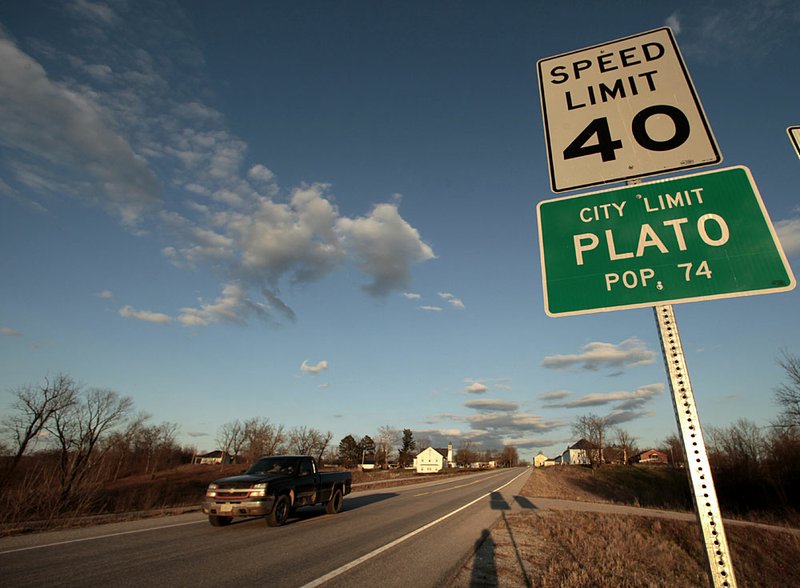WASHINGTON — Hispanics made up more than half of the nation’s population growth over the past decade and now account for 1 in 6 Americans, or 50 million people, the U.S. Census Bureau reported Thursday.
Among U.S. children, Hispanics are roughly 1 in 4.
Census data also show that the population center of the United States remains in Missouri, where it has been for the past four decades, but it continued its slow crawl toward the Arkansas border.
Meanwhile, more than 9 million Americans checked two or more race categories on their 2010 Census forms, up 32 percent from 2000.
The findings were part of the first set of national-level data from the 2010 count on race and migration, detailing a decade of rapid minority group growth.
The final count: 196.8 mil-lion whites, 50.5 million Hispanics, 37.7 million blacks and 14.5 million Asians.
Hispanics and Asians were the two fastest-growing demographic groups, increasing about 43 percent each from 2000.
“These are big demographic changes,” said Mark Mather, an associate vice president at the nonprofit Population Reference Bureau.
http://www.arkansas…">Census map data
“There is going to be some culture shock, especially in communities that haven’t had high numbers of immigrants or minorities in the past.”
“By 2050, we may have an entirely new system of defining ourselves,” he said.
While Texas and California had the largest Hispanic populations, many of the states that saw the biggest jumps were in the South, including Arkansas, according to the Pew Hispanic Center, a nonpartisan think tank.
The state’s Hispanic population grew from 3.2 percent in 2000 to 6.4 percent, or 186,050, in 2010, earlier census numbers show.
Of Arkansas’ 711,475 residents under 18, Hispanics made up about 10.5 percent in 2010, a 134 percent increase from a decade ago.
The increase of 42,940 Hispanic children occurred while the state’s number of white and black children declined, mirroring a national trend.
University of Arkansas economist Kathy Deck said birthrates among members of minority groups are outpacing those of whites, confirming the census numbers that show an increasingly diverse nation.
More than 46 percent of the nation’s children identify as being members of minority groups in 2010, up from 39.1 percent a decade ago.
“If you project it out just simply, that’s what the future looks like,” she said.
In all, racial and ethnic minority groups made up about 90 percent of the total U.S. growth since 2000, part of a trend in which minority groups are expected to become the majority by midcentury.
In addition to unveiling the nation’s demographic landscape, the Census Bureau noted that the country’s center of population is in Texas County, Mo., at the intersection of 37.517534 north latitude and 92.173096 west longitude.
That’s about 2.7 miles northeast of the town of Plato, population 109.
The center of population is a term used to describe the geographic distribution of U.S. residents.
“Imagine that we have, conceptually, a flat and weightless rigid map of the United States [and] all of us, all 308.7 million, weigh exactly the same,” and sit on that map, Robert Groves, director of the bureau said Thursday.
“You find the place where that balances,” he said. “That’s the mean center of the population.”
In 1790, the first time that the U.S. mean center was tabulated, the population center was in Kent County, Md.
During the decade leading up to the 2010 Census, the center moved south “in the most extreme way we’ve ever seen in history,” Groves said.
In the 2000 Census, the center was about 23.4 miles northeast of the current center, near the town of Edgar Springs.
Groves attributed the southern movement to large population gains in the Carolinas, Florida, Georgia and Texas.
Groves noted that the center’s single greatest movement was during the decade preceding the 1860 Census, when it shifted 80 miles to settle in Pike County, Ohio.
Plato, Mo., is about 80 miles north of the Arkansas border, meaning that large population shifts would be necessary to move that center across the state line into Arkansas.
But Groves said that isn’t out of the question.
“It depends on a lot of things,” he said.
Information for this article was contributed from Plato, Mo., by Alan Scher Zagier, and from Washington, D.C., by Hope Yen, of The Associated Press.
Front Section, Pages 1 on 03/25/2011
